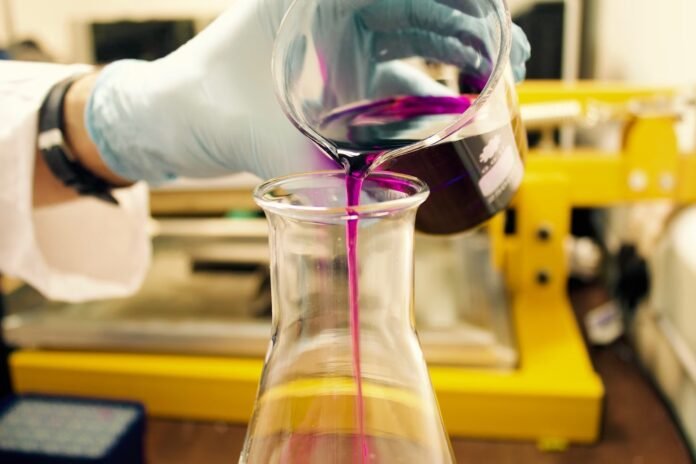Up until the famous Industrial Revolution, the world had been a stranger to organic chemistry. One of the first chemicals produced for industrial use was sulfuric acid. Today, the world has come a long way from its humble origins of chemical production.
It is ‘estimated’ that the total number of chemicals in use today (worldwide) easily exceeds 350,000. The Environmental Protection Agency (EPA) itself has around 86,000 chemicals that are regulated under the Toxic Substances Control Act (TSCA).
However, some are so deadly to mankind and the environment that they must be banned completely and permanently. The agency has lately added three such hazardous chemicals to its prohibited list. In this article, we will discuss these industrial chemicals and the damage they’ve caused in detail.
Methylene Chloride
Prepared through the reaction of hydrogen chloride with methanol, methylene chloride is a colorless volatile liquid. It was first synthesized by two French chemists – Eugene Peligot and Jean-Baptiste Dumas in 1835.
Though formerly used as an anesthetic and refrigerant, it gradually made its way into the manufacture of silicones. Other applications of methylene chloride include paint removal and stripping, along with the production of pharmaceuticals. Both in its liquid and gaseous form, this chemical is harmful to humans.
As per the New Jersey Department of Health and Senior Services, methylene chloride can cause permanent damage to the skin and eyes. Prolonged and high-level exposure can even lead to life-threatening conditions like cancer.
In 2019, the EPA had strictly regulated methylene chloride’s usage, banning it in paint removal products. However, in light of the chronic health dangers, a complete ban was proposed in 2023. In other words, this chemical cannot be used in any commercial, industrial, or consumer products.
The EPA cited that at least 85 people (primarily workers) lost their lives due to methylene chloride since 1980. This move aimed at protecting public health, especially for workers working in companies with no strict workplace control program for safety.
Trichloroethylene (TCE)
A halocarbon formed due to chemical synthesis, trichloroethylene or TCE has a wide number of industrial applications, including degreasing solvents, refrigerants, spray adhesives, tool cleaners, paint removers, etc.
There was a time when the general anesthetic was produced using this chemical. According to the EPA, most of the TCE is released into the atmosphere after industrial use. Inhaling too much of this chemical can negatively affect the central nervous system.
Experiments among lab animals have found TCE to cause kidney and liver cancers. However, is it toxic for humans? The most striking evidence is the Camp Lejeune water contamination crisis. Between 1953 and 1987, residents at North Carolina’s military base were exposed to highly polluted water.
An offshore dry-cleaning facility was found to be the cause, and the most predominant chemical responsible for contamination was trichloroethylene. Over the years that followed, thousands of veterans developed life-threatening conditions like non-Hodgkin’s lymphoma, leukemia, lung cancer, hepatic steatosis, etc.
It is believed that this worst-ever water contamination tragedy in US history affected the lives of one million individuals. In 2022, President Joe Biden finally allowed the victims to seek legal justice and compensation.
The Camp Lejeune water contamination lawsuit is currently active, with its filing window open till August 2024. As many as 117,000 administrative claims have been filed, and the Department of Justice (DOJ) is estimating a whopping $3.3 trillion in settlements.
According to TorHoerman Law, the legal process for this litigation is developing in the North Carolina federal court to close the most severe cases first. As for TCE, a proposal was finally made in October for a complete ban. This move would protect human life from neurotoxicity and cancer and honor the commitment to environmental justice.
Per-and Polyfluoroalkyl Substances (PFAS)
Per- and polyfluoroalkyl substances or PFAS are not exactly a single chemical but a complex group of over 12,000. Though their chemistry was discovered in the late 1930s, PFAS became widely available through consumer products in the 1950s.
According to the Agency for Toxic Substances and Disease Registry, Perfluorooctanoic Acid (PFOA) and Perfluorooctane Sulfonic Acid (PFOS) are the two most commonly studied chemicals from the group. PFAS find a wide range of everyday applications, being present in textiles, shoes, stain-resistant carpets, cookware, and more.
They pervade the earth to the extent that rainwater samples across the world contain traces of PFAS (including Antarctica). They are also known as ‘forever chemicals’ because of their potential to stay indefinitely in the soil and human body.
The carbon-fluorine bond of PFAS is so strong that it is nearly impossible to break. As a result, PFAS have contaminated military bases and public water systems. The EPA already has 180 locations added to its Superfund list for cleanup.
Also, they have been classed as human carcinogenic capable of causing cancers of the breast, testicles, and bladder. A litigation associated with these chemicals is active across Federal courts filed by firefighters. Class B firefighting foam (Aqueous Film Form Foam) is made of PFAS and has led to the aforementioned injuries.
Seeing the damage PFAS are capable of (and the cleanup complications involved), a complete ban has been declared. 3M, the primary manufacturer of PFAS for decades, will cease all production by late 2025.
Closing Thoughts
It is indeed a relief that the EPA has banned the production of the above-mentioned chemicals. However, it’s highly unlikely that the repercussions will disappear anytime soon. This is especially true of PFAS as nearly 50% of the US tap water is already contaminated with them.
They have been deemed impossible to escape, being present in the soil, water bodies, and the atmosphere. Hopefully, each ban is not secretly followed by the addition of a new chemical, thereby perpetuating the cycle of destruction.




